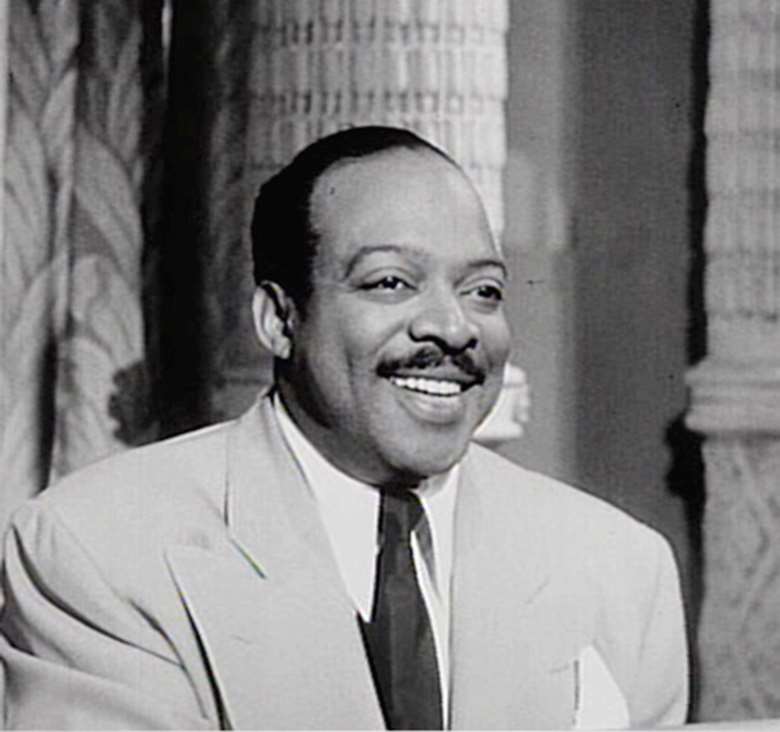Count Basie
Kevin Le Gendre
Along with Duke Ellington’s, Basie's band became one of the most popular of the swing era, delighting audiences with a joyous, rousing groove

A lone black cowboy rides the range. Resplendent in buckskins and Stetson with the assured demeanour of a master of the majestic plains stretching out to the horizon, he is the embodiment of Wild West mythology. And then he trots over to… the Count Basie big band, its rows of horn players on a podium amid the tumbleweed, swinging sweetly on ‘April In Paris’! This utterly surreal scene is from Mel Brooks’ 1974 comedy hit Blazing Saddles, and disconcerting as it is the film said much about the incredible longevity of the pianist-bandleader born William Basie in New Jersey at the turn of the 20th century.
He had been making music for the best part of 50 years. In fact, his big screen cameo was a brilliant coup insofar as it acted as a marker of cultural evolution, for Basie had actually accompanied silent movies in the early stage of his career.
Deeply influenced by the pioneers of the New York stride school such as James P. Johnson and Fats Waller, Basie was drawn to big bands, cutting his teeth in classic ensembles led by Walter Page and Benny Moten, before purloining some of the latter’s best players and forming his own outfit.
Along with Duke Ellington’s it became one of the most popular of the swing era, delighting audiences with a joyous, rousing groove pivoted on drummer Jo Jones, bassist Page and guitarist Freddie Green, whose steady strumming was vital to the unbroken momentum of the music.
Soloists of the calibre of tenor saxophonists Lester Young, Don Byas and Buddy Tate, trumpeters Buck Clayton and Joe Newman and trombonist J.J. Johnson ensured that there was plenty of colour in the improvisations that graced irresistible tunes that found favour with dancers both in America and Europe.
Never straying too far from the bedrock of the blues, Basie astutely hired the superb vocalist Jimmy Rushing, and later freshened up his sound with charts supplied by arrangers such as Neal Hefti, whose writing featured on 1957’s The Atomic Mr Basie, and later a young man with a bright future by the name of Quincy Jones.
An unshowy pianist whose strong, assured comping served his soloists well, Basie inevitably suffered a downturn from the ‘60s when rock really came to prominence and big bands went out of fashion.
Of all the recordings that Basie made in his late period then it was 1974’s Afrique, which featured some dazzling arrangements by Oliver Nelson and songs by avant-garde icons Albert Ayler and Pharoah Sanders, which was one of his most adventurous.
With Ellington having passed away in 1974 Basie’s death almost a decade later truly marked the end of the big band era, but the influence he exerted on modernists such as Charlie Parker as well as his ability to retain populist appeal made him a hugely important figure in jazz, and, as can be seen in Blazing Saddles, he also knew how to wear a fisherman’s cap with a certain panache, even for the sake of a madcap western.